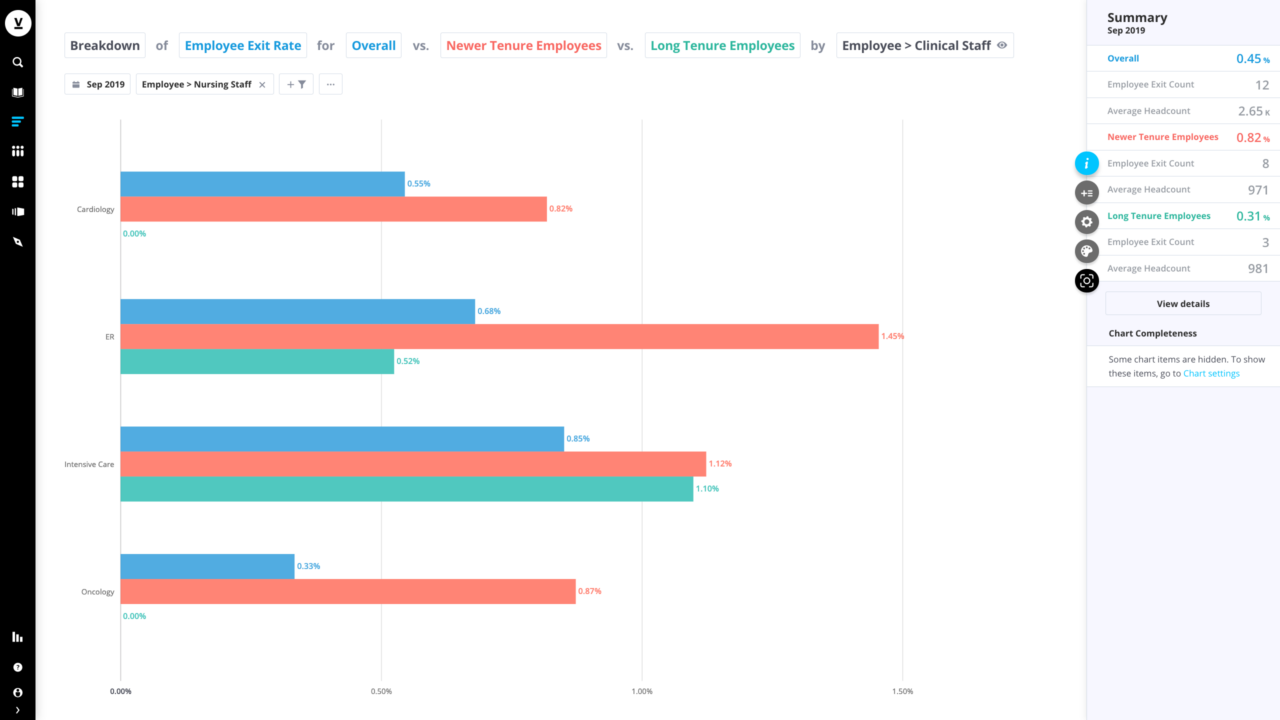Avoid a Reduction in Force: 5 Layoff Alternatives
When a recession looms large, layoffs aren't the only option to stay afloat. Here are 5 alternatives informed by people analytics.

It’s a three-letter acronym that nobody likes to hear or talk about. But a R.I.F. (reduction in force) is something many organizations are having to consider as a recession looms on the horizon. One probability model estimates a 96% chance of a recession occurring at the end of 2022.
R.I.F.s are an obvious way to curb spending and may be necessary—but they don’t come without risks. Deep cuts can impact the morale and productivity of people who are keeping their jobs and lead to loss of top talent. As highlighted in this HBR post, layoffs can also lead to a persistent drop in profitability for three years.
5 Layoff alternatives & how analytics can help
Even when the financial outlook is grim, however, there are alternatives to across-the-board job cuts. When organizations use people analytics, they gain a clearer picture of the situation at hand, and open up the range of possibilities for tackling cost challenges. Using analytics also offers more flexibility in terms of modeling various cost scenarios to make the best financial decisions–while minimizing the human impact.
Here are five cost-saving ideas to consider with people analytics:
Natural attrition
Hiring freeze
Reskilling
Limiting overtime
Furloughs
1. Natural attrition
Natural attrition may be a more cost-effective strategy than layoffs. Look at resignations, performance-based dismissals, retirements, and leaves of absence that are expected to occur in the upcoming period. A robust analytics platform can help you project your probable attrition accurately.
To learn how one organization saved $400,000 through natural attrition, check out this healthcare customer’s story.

This visual compares the exit rate of nurses with longstanding tenure to the exit rate of newer nurses. *Fictional data used for customer privacy.
2. Hiring freeze
According to an April 2021 Visier Insights Report, many organizations are looking to cut costs through hiring freezes. To do this successfully, you will need to identify critical roles—those positions that are critical to your business functioning on a day-to-day basis. With analytics, you can immediately determine costs for keeping these positions filled, while freezing hiring for non-core roles.
Want to learn more about identifying key roles as your organization adapts to a new reality? Check out this post about rightsizing.
3. Reskilling
Reskilling is often more cost-efficient and effective than hiring. To determine what level of investment will be needed to move your existing people into critical roles, ask questions like: What types of transitions have other employees made in the past to get into these roles? How long does it take to get there? People analytics can help you find answers to these questions quickly.
To learn about a four-pronged strategy for reskilling employees, check out this post.
4. Limiting overtime
Overtime can be expensive, particularly for non-exempt employees. People analytics can help you track how much you are spending on overtime and identify if it is concentrated on a few people. This insight can help you redistribute the workload and reduce your spending.
Read this case study to learn how the City of Edmonton’s HR team used people analytics to quickly mitigate overtime risks during an unexpected crisis.
5. Furloughs
The term layoff is often used interchangeably with furlough—but they are different things. A furlough is a temporary leave of absence or reduced work schedule, while a layoff is considered a full separation from employment. You can use analytics to create plans for different cost scenarios, such as continuing to pay benefits to people who are on leave for extended periods of time vs. not paying these people benefits.
Once you have determined your furlough strategy, you can use analytics to ensure all employees are accounted for as they near their return dates.
Check out this video to learn more about furloughs.
Strategic HR: It’s both an art and a science
At the most basic level, the HR professional’s job is to ensure that the business gets the most out of its employees. But savvy HR experts understand that people aren’t just numbers—they are complex, unique individuals with genuine desires and needs.
That is the art of strategic HR: reconciling the human dimension with bottom line considerations. Data enables you to make fairer decisions and avoid bias in your strategy building. By using analytics to determine how to save money while avoiding damaging job cuts, you can help contribute to a better bottom line—while also minimizing the impact on people.


